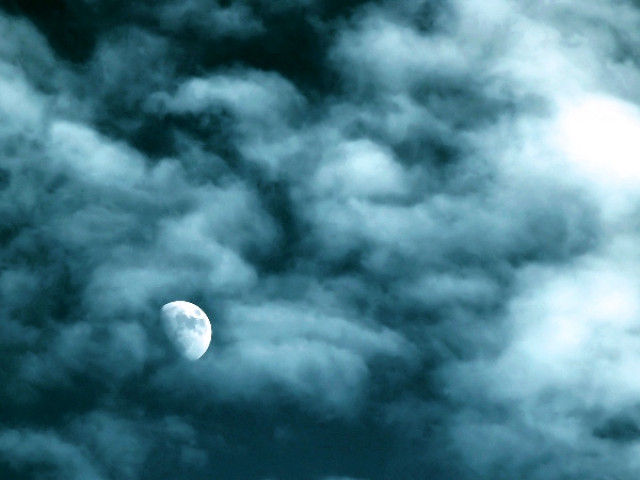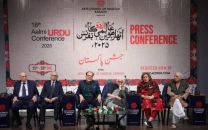Scientists snub claims of early moon sighting in Pakistan
For moon to be visible, duration between moonset and sunset must be at least 38 minutes for a naked eye: Scientist

Scientists snub claims of early moon sighting in Pakistan
In-charge of Karachi University’s Institute of Space and Planetary Astrophysics (ISPA), Dr Iqbal explained that “for the moon to be visible, the duration between moonset and sunset must be at least 38 minutes for the naked eye and 35 minutes for a telescope."
Dr Shahid Qureshi, an expert in astronomical studies whose doctoral thesis was on the visibility of the lunar crescent, not only endorsed the above stated calculations but also termed the duration between moonset and sunset as the only authentic perimeter for moon sighting.
Dr Qureshi also said that the age of the new moon, in contrast to conventional beliefs, is not related to its visibility.
“The age of the moon in fact is the most misleading criteria,” said Dr Qureshi.
Explaining further, Dr Iqbal said that the moon is perceived as astronomically new when the lunar disc rotating around the earth comes in conjunction with the sun-earth line. He added that the time of conjunction can be accurately predicted but it should not be confused with the first visible crescent of the moon.
“It is scientifically rare to observe a new moon through naked eyes earlier than 20 hours from the instant of conjunction,” said Dr Iqbal, adding that “the beginning of a month in lunar calendar in marked only after the visibility of new moon.”
Dr Iqbal snubbed the possibility of moon sighting on August 17 as the conjunction took place at 8:54pm Pakistan Standard Time. “The claim of moon sighting in North Waziristan Agency even before the conjunction was ridiculous and wrong,” he stated. “The moon could not be seen anywhere in the world by naked eye or even through high powered telescopes on Friday,” he added.
Elaborating this point further, Dr Qureshi said that the earliest recorded evidence of the moon’s visibility was received from Tasmania, where it was observed by a telescope for 15 hours and 36 minutes after the conjunction, which was on August 18 at 7:30am Greenwich Mean Time.
Commenting in the light of Islamic laws, Dr Qureshi said the "Shariat cannot go against the laws of nature because it was fixed by God."
“For example, God allows us to pray facing anywhere in a situation where we have no knowledge or means to find the direction of Kaaba but the knowledge and means make it obligatory on us to determine the location for prayer,” Qureshi said, adding that the “denial of evidence based scientific knowledge on moon sighting is equal to denying both the laws of Islam and the laws of nature.”
He added that even the Muslim scientist Abu Rehan alBeruni had stated around 1000 years ago that moon sighting was an issue which requires good knowledge of astronomy.



















COMMENTS
Comments are moderated and generally will be posted if they are on-topic and not abusive.
For more information, please see our Comments FAQ